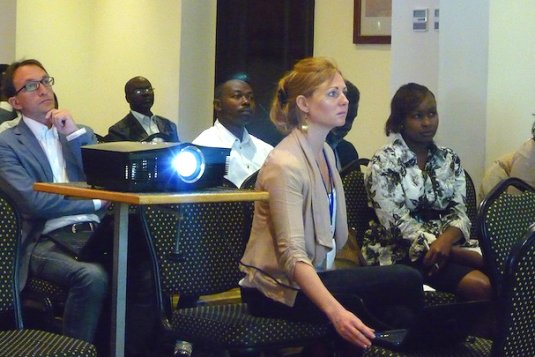
Shedding light on avoidable disease mortality in Africa: the climate factor

30 May 2013
The relationship between climate and health in Africa, and elsewhere globally, is still poorly studied and often overlooked altogether.
Avoidable environmental health-related mortality is responsible for an estimated 2.4 million deaths in Africa each year, according to the Healthy Futures website.
Yet accessible, high-quality climate data helps planners understand the distribution of disease – especially vector-borne diseases – and is key to the accurate forecasting of outbreaks.
Understanding the links between climate, societal changes and health can also help project the health impacts of climate change – likely outcomes being improved abilities to both quantify the health costs of climate change and adapt to it.
The unique Red Cross Red Crescent Health Risk Management Project (HRM), funded by the US Rockefeller Foundation, explored ways of integrating climate with health programming in Indonesia, Kenya, Tanzania and Vietnam.
Malaria
Detailed results from the Tanga region of Tanzania were presented at a symposium in the Rwandan capital, Kigali, at the end of March that gathered specialists at the cutting edge of research.
It was one of several coordinated by Healthy Futures and another EU-funded project, the University of Liverpool’s “Quantifying Weather and Climate Impacts on Health in Developing Countries”, as part of the 4th Annual East African Community Health and Scientific Conference.
In East Africa, both average and extreme precipitation are expected to increase with climate change, with a corresponding impact on malaria and diarrhoeal disease.
HRM was aimed at improving the use of early-warning information by implementing community-level health interventions in Tanga – one of Tanzania’s most densely populated regions, where flooding is sporadic and malaria and diarrhoeal disease common.
The main objective was to decrease the risk of malaria and diarrhoeal disease for about 30,000 rural beneficiaries and 60,000 people in the suburb of Tanga city.
Ups and downs of rainfall
The Tanga branch of the Tanzania Red Cross Society was also assisted in understanding the climate-related health risks it faces.
The Kigali symposium heard that HRM baseline surveys used “random cluster sampling” to assess local people’s perceptions of climate variability and change, links between climate and disease, and prevention.
A key message was that climate adaptation measures in East Africa, like hygiene promotion, should be able to deal with the ups and downs of rainfall – encompassing an increase in both average and extreme rainfall, and droughts.
We also emphasized that general information about climate change should be given in places and formats that can reach women and people who have not been to school – those possibly most at risk, that is.
Among our recommendations was for national meteorological offices and health ministries to form productive partnerships to work on climate change.
Educational material should also be locally appropriate and accessible, and efforts toward hygiene promotion should tap into existing community forums like women’s groups.
A presentation at the Kigali symposium on the relationship between climate and health in Africa – part of the 4th Annual East African Community Health and Scientific Conference. (Photo: Climate Centre)